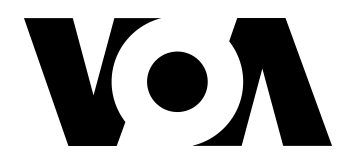By Edward McAllister and Anna Uras
ATHENS (Reuters) -When armed Israeli soldiers boarded a flotilla of boats trying to deliver food and medicine to Gaza on Wednesday night, two web developers in Glasgow scrambled to keep track of the vessels as millions of people worldwide tuned in to monitor their fate.
As grainy footage from onboard cameras broadcast the raids live on the flotilla's website, the developers updated the status of the vessels in real-time and posted short videos of each takeover. The clicks were unprecedented, they said: the site registered 2.5 million visits on Wednesday and 3.5 million on Thursday.
"I have never seen numbers like that – not on a website I've ever made," said Lizzie Malcolm, the co-director of Rectangle, a design and software development studio that helped track the vessels on behalf of the organisers.
NEW FLOTILLA EN ROUTE IN HIGH-PROFILE CAMPAIGN
The Global Sumud Flotilla was seeking to breach an Israeli naval blockade of Gaza, which has been decimated by a two-year Israeli assault.
It consisted of more than 40 civilian boats carrying about 500 parliamentarians, lawyers and activists, including Swedish climate campaigner Greta Thunberg.
The flotilla failed to reach Gaza - the boats were intercepted and escorted to Israel. But over the course of ten days it emerged as the highest-profile opposition to Israel's blockade. Buoyed by that publicity, another flotilla of 11 boats has already set sail.
Through a sophisticated social media campaign, updated boat-tracking technology, savvy website design and grassroots organising, the mission gained massive attention and support, energising a global movement to lift the blockade.
While Israel says its naval blockade is legal as it battles Hamas militants in the coastal enclave, and officials have repeatedly denounced the mission as a provocation, the flotilla has widespread support.
Wednesday's seizure triggered protests in cities across Europe and as far afield as Argentina, Mexico and Pakistan, and drew criticism from politicians and leaders from Colombia to Malaysia.
CREATING A MOVEMENT
Israel first imposed a blockade on Gaza in 2007 when Hamas took over the territory, but efforts by activists to raise awareness have gained traction since the outbreak of the war in October 2023, which was triggered by Hamas' attack on Israel.
This latest campaign has gained more attention than ever before.
The flotilla benefited from, and contributed to, a wider political shift since June, which has seen nations including France and the UK recognise Palestinian statehood in reaction to Israel's offensive, said Dan Mercea, a professor of digital and social change at St George's, University of London.
"The cultural impact is beginning to show. That is not just the flotilla, but they are making a difference."
An attempt in June by the March to Gaza group, in which activists were scheduled to march to Egypt's Rafah border crossing with Gaza, was disrupted when Egypt deported dozens of activists. Other, smaller flotillas have tried to breach the naval blockade, but their efforts have garnered less attention.
Then in June, organisations including the March to Gaza held a meeting in Tunis, in which they discussed clubbing together.
"The idea was that a bigger thing was needed. There were discussions about how to communicate with people and an exchange of knowledge," said Antonis Faras, from the Greek contingent of the March to Gaza movement.
HUGE SUPPORT FROM THE START
The Global Sumud Flotilla was born and it had a clear mission: to break Israel's blockade.
The organisation had huge support from the start. When it sent out an invitation for people to participate, it received 20,000 applications, Faras said. In Italy, a charity called Music 4 Peace began collecting aid donations, with a target of 40 tons. In five days they collected more than 500 tons.
Across Europe, missions started to prepare. The Greek contingent sourced 25 boats from across Europe. When it asked for donations, it received more than it could carry.
In Italy, local organisers cultivated relationships with unions, who supported the flotilla with strikes and actions at various ports. That grassroots connection paid off on Wednesday: within hours of the Israeli interception, people were on the streets in protest, and the unions had called a general strike for October 3.
The movement was broken down into countries, each one with its own press spokesperson.
"The protests' success stems from the fact that every region meticulously worked on their territory... this structure proved to work," said Maria Elena Delia, a spokesperson for the Italian delegation.
A LIVE FEED TO THE WORLD
The flotilla sent regular updates on X, Telegram and Instagram and held press conferences via Zoom with activists on the boat. Nelson Mandela's grandson was on board. Thunberg gave interviews from the ship's deck.
It had live feeds from the boats, and improved ship tracking devices. In Glasgow, Malcolm and her partner Daniel Powers, who collaborated with London-based Forensic Architecture research group, benefited from added layers of tracking capabilities, including backup from Garmin devices and even cellphones should other methods fail.
The cameras on board gave people a rare live view on Wednesday night as the Israeli navy demanded captains turn off their engines as soldiers boarded the boats with guns and night vision goggles. As part of an agreed safety protocol, the activists sat in life vests, their hands in the air.
Malcolm and Powers watched the images from their studio in Glasgow as the night went on, updating the list of boats and changing their status one by one from "sailing" to "intercepted".
"We have seen how much people want to watch this. It does something. There is something positive in this – you are really willing them to get there," Malcolm said.
(Writing by Edward McAllister; Editing by Sharon Singleton)







